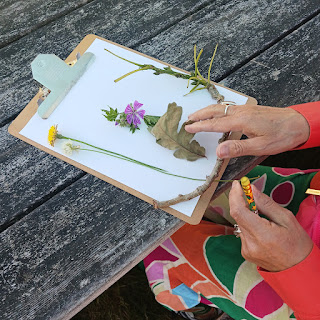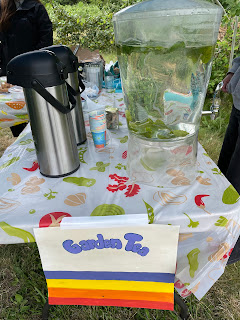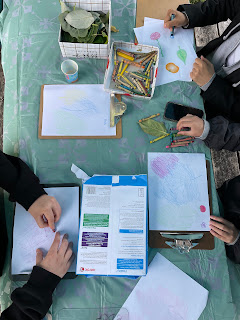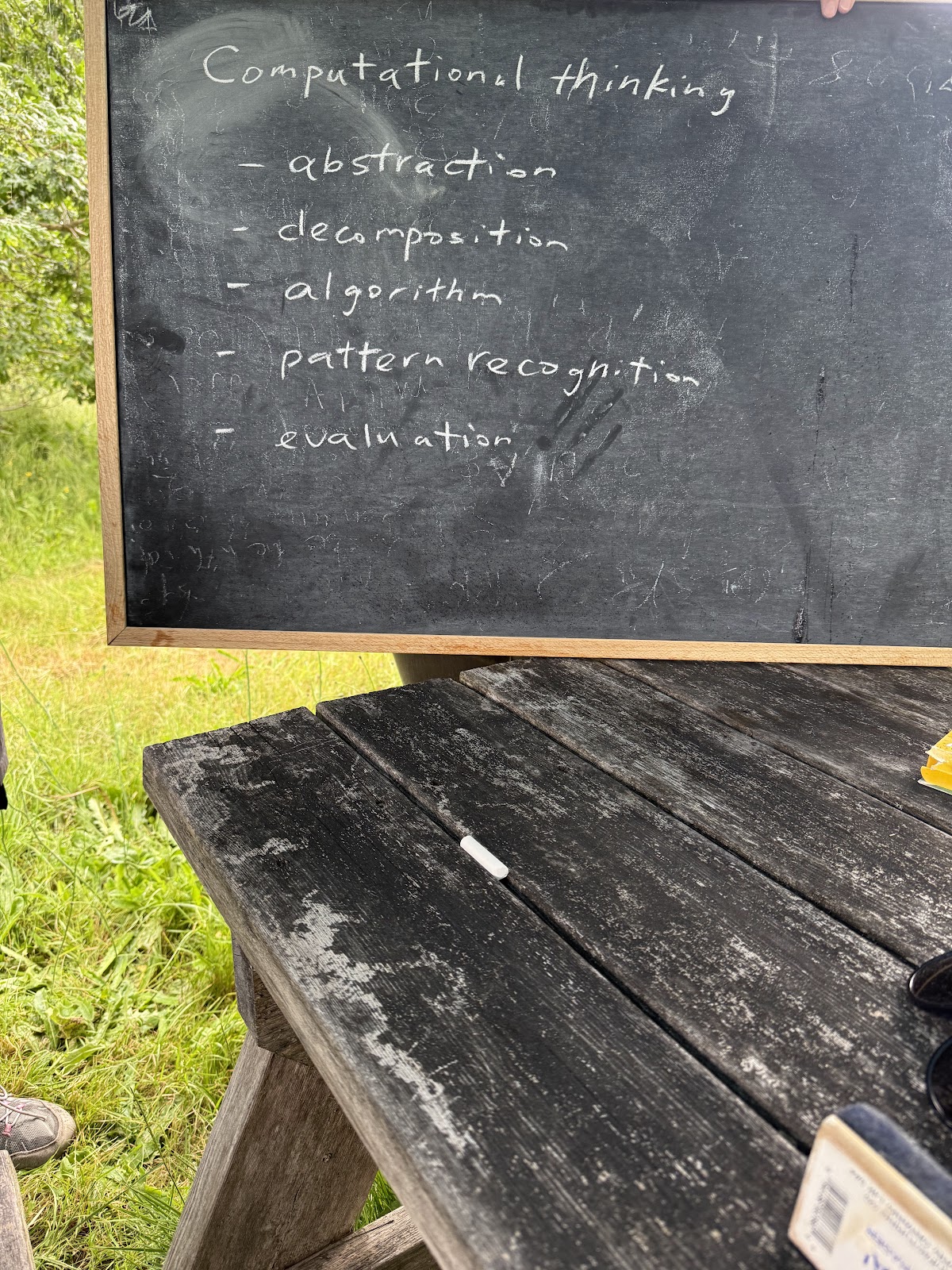Today the CFE students spent our last day in the garden! We all took part in a wonderful Saturday workshop, led by Manny, Stacey, Zeynep and Emma. They started the workshop with a land acknowledgment, and then we spent some time introducing ourselves and sharing which living thing we would choose to be in the garden, if we could be anything. I chose to be the cheerful green clovers, basking in the sun. The team gave us all an update on what new things have been growing in the garden lately as well!
Our first activity was to find a quiet spot on our own and to sit in that space and observe whatever we noticed. I chose to sit in the little space beneath a low-hanging apple tree. Once we had spent some time sitting peacefully in our sit-spot, we used our imaginations to create a story about one thing we found in the space. For example, we could pick a plant we observed and give it an elaborate backstory. We had time to share our stories with a partner after. Then we had a break to indulge in the delicious snacks the team made, many containing fresh ingredients from the garden.
During our break, we explored the adorable medicinal herb activity set up by Zeynep.
After break, we came back together for another coding-unplugged activity in the garden. Partners took turns creating an artwork out of natural materials they had collected in the garden. They then attempted to write out specific instructions for their partner so that they would be able to recreate their partner's artwork, without having seen it first.
















































